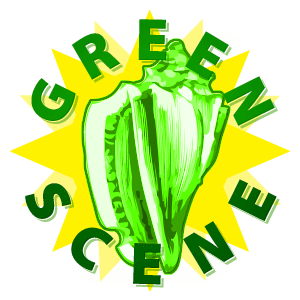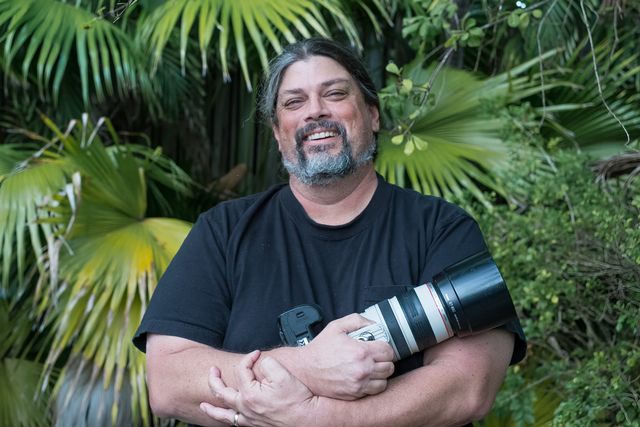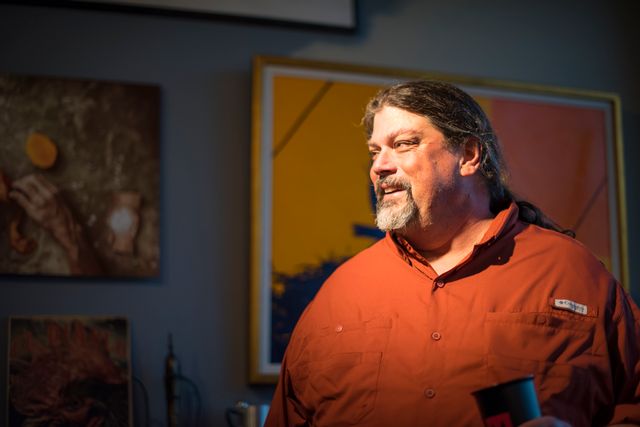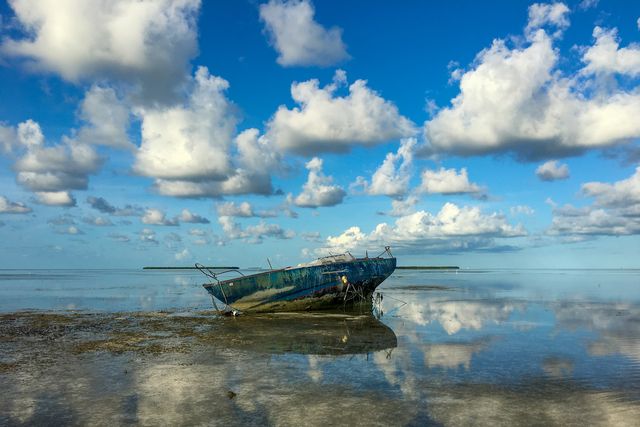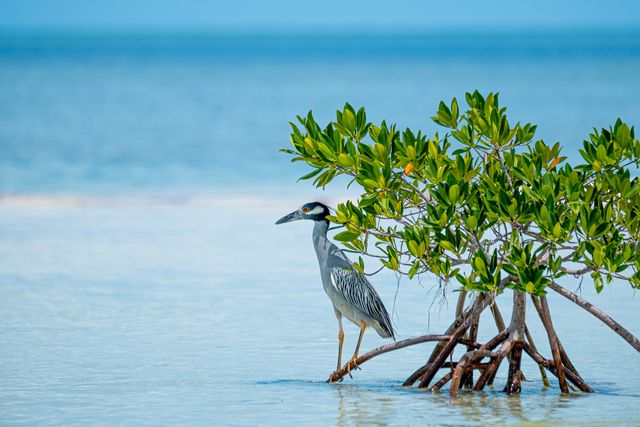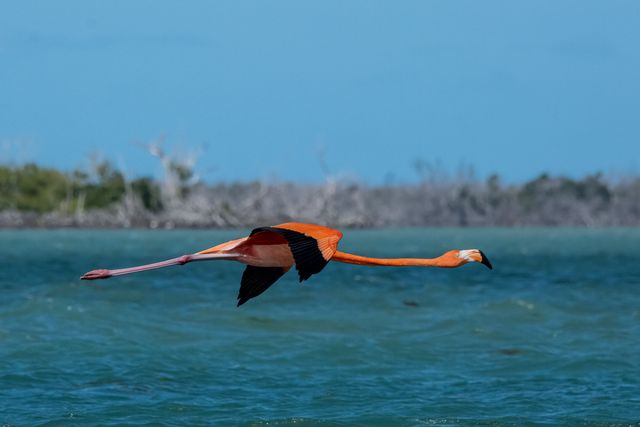Mark Hedden: Steward of the Florida Keys Audubon Society
Mark Hedden, executive director of the Florida Keys Audubon Society and artist-in-residence at The Studios of Key West, is perhaps the Keys’ best known “bird man.”
His recent “South of Southernmost” photography exhibition documents scenes from fragile and wild Ballast Key, a federally protected haven for birds and lemon sharks in the backcountry flats that lies about 8 miles west of Key West.
Hedden has made more than 30 trips to 14-acre Ballast Key, the actual southernmost island in the contiguous United States, filling in as an occasional caretaker when needed.
A self-taught photographer, Hedden produced a photo-narrative series, “On the Hook,” about Key West’s liveaboard boat community, and “A Mixed Up, Muddled Up, Shook Up World,” showcasing street scenes during the Fantasy Fest celebration.
He’s also been a Shoney’s waiter, pub-quiz quizmaster and publisher of the Bone Island Sun. He’s worked at a comedy club and co-owned an international birding eco-tour company.
Today, Hedden pens a weekly “Wild Things” newspaper column. He also enjoys listening to Madonna, playing poker with friends, bike riding around Key West, exploring Fort Zachary Taylor Historic State Park and hanging out at Green Parrot Bar — where, 28 years ago, he first met journalist Nancy Klingener, who became his wife.
A recent excursion to West Summerland Key yielded rare sightings of a wild 4-foot-tall American flamingo.
Most dedicated birders have a “jinx bird” — one species as-yet unseen and elusive. Hedden’s is the La Sagra’s flycatcher, which breeds in Cuba, the Bahamas and Grand Cayman. He calls bird-watching “a process of discovery that never ends.”
Through creative artistry, Hedden hopes to inspire others to discover what an amazing place the natural world is. As well as planning new programming for the 400-member Audubon Society, he hopes to produce books about his unique immersions into Keys life.
Keys Traveler: When did you first come to the Florida Keys and why?
Mark Hedden: In 1987. In college, I came down to visit a friend working in West Palm [Beach]. She picked me up at the airport and said, “We’re going to Key West!” I was like, “Sure, fine, wherever that is.” My strongest memory is getting here after dark and not being able to find the ocean.
KT: What aspects of the Keys environment or way of life matter most to you?
MH: I love the way that the natural world intersects with your everyday life here, the way you can see a bald eagle while you’re driving to the grocery store. The way you can see magnificent frigate birds and white-crowned pigeons, birds you don’t really see in the rest of the country, nearly every day. A few minutes ago there was a painted bunting at my feeder.
KT: Who or what inspired you to become passionate about respecting and protecting the Keys’ natural world?
MH: I was a nascent birdwatcher when I met Fran Ford in the 1990s, and she kind of dragged me into the Florida Keys Audubon Society before I knew what it really was. That changed my life. Fran passed away a few years ago, but there are a number of folks whose lives she changed. We try to do her legacy proud.
KT: How does that passion influence your work or profession?
MH: The Florida Keys Audubon Society is a great platform for learning about the natural world of the Keys. Part of the way I learned about birds is by writing about them for Key West Weekly. Nothing sharpens the mind like people believing you know what you’re talking about, and you doing your best not to prove them wrong.
KT: What are some of the ways, personally or through your work, that you connect with and/or help protect the local environment and unique lifestyle?
MH: I always feel connected to the landscape and seascape here. Watching the way birds use the habitat — what trees they like to feed in or roost in, where they spend their time, where they don’t — all of that gives you an idea of what’s at stake.
KT: What keeps you energized, challenged and focused on your path?
MH: Being able to walk out my door and have no idea what kind of wildlife I’m going to encounter that day.
KT: What do you hope your positive environmental actions will accomplish?
MH: Curiosity is one of the great underutilized tools in environmentalism. And if I do anything useful, it’s trying to foster that sense in others.
KT: What’s your favorite natural or eco-friendly activity in the Keys?
MH: There is nothing better than walking around Fort Zachary Taylor State Park in late April or early May. It’s peak migration. It can be mind-boggling — the diversity of bird species.
KT: What message do you want your actions and example to communicate to people you encounter?
MH: That there is this whole other crazy layer of life in the Keys that’s easy to miss. I didn’t really tune into the bird life for the first five or eight years I lived here. But once you tune into it, you’ll never stop learning..
A recent excursion to West Summerland Key yielded rare sightings of a wild 4-foot-tall American flamingo.

